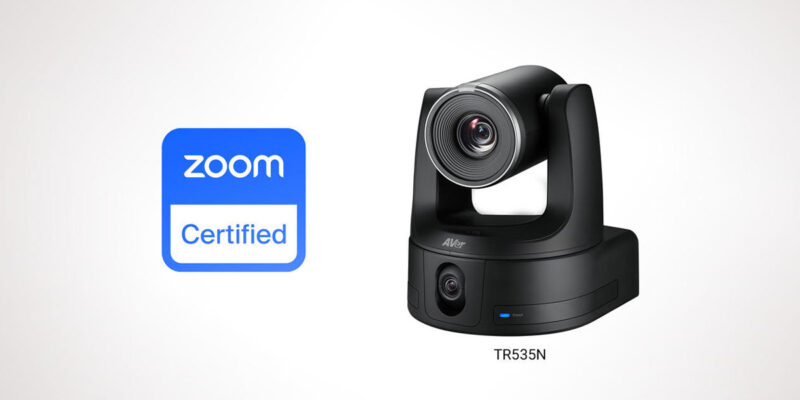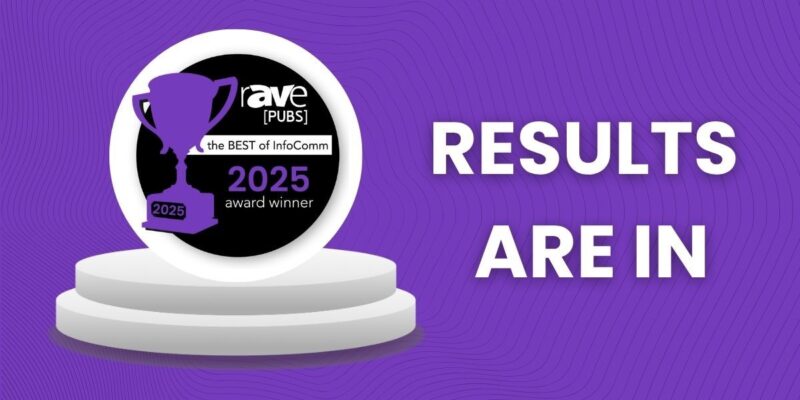LAVNCH EMEA Day 2: Hybrid Working Is Bursting With Opportunity
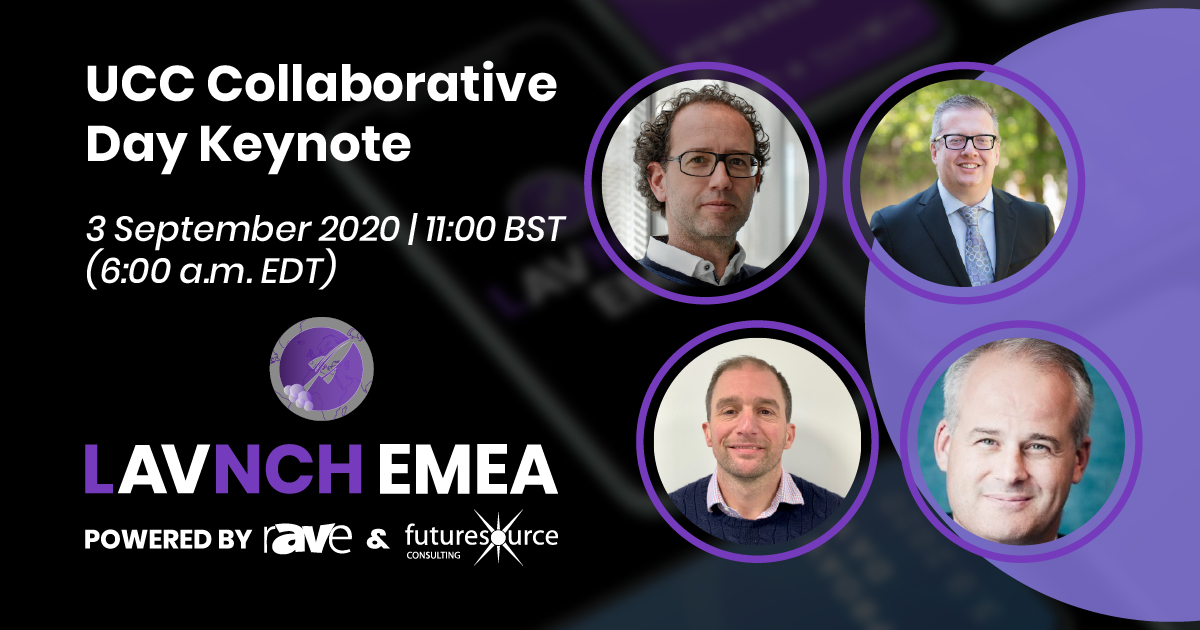
We at rAVe were as excited about day two of LAVNCH EMEA — UCC Collaborative Day — as any other LAVNCH event we’ve hosted thus far. It’s like Chris Mcintyre-Brown of Futuresource said Wednesday on ProAV Day and reiterated this morning: UC&C (unified communications and collaboration) technology is intertwined into every AV discussion today. How could it not be?
Zoom’s Founding: A “Love Story”
Kicking off the keynote for UCC Collaborative Day was Magnus Falk, CIO advisor of Zoom. He introduced Zoom’s origination as a “love story” of founder Eric S. Yuan, whose love for communications led to the video-first UC platform. Falk then jumped into Zoom’s take on the new world of hybrid work. For one, hybrid work is a sector bursting with opportunity. But you have to consider that hybrid work is more than just meetings now.
There are seemingly endless use cases for the Zoom platform. It went from 10 million daily meeting participants in 2019 to 300 million daily meeting participants in April 2020. Use cases now include large meetings, external presentations, internal communications, learning and development, sales demos, brainstorms, webinars, virtual events like LAVNCH EMEA — really anything that would have previously been done in person. Like an AV industry trade show!
“I thought I lived in the future back in 2010,” Falk said.
It took a pandemic to show what was truly possible, he continued. There were massive effects on the home-work evolution — like living where work is done. Managers have had to develop new skills, managing remote workers virtually. We’ve all had to learn to use personal tools for business and business tools for personal. Many of us have faced difficulty managing personal and work life, all while working longer hours. Evolving at work now (we will not go back to the “old normal,” Falk said) means video meetings will become integrated into our workflows. Personal and small-room collaboration devices will become the standard (like the solutions in Zoom for Home). Communication transfer just needs to work. It must be frictionless.
Today, we’re finding that individuals can work from home effectively and productively — even more so at home than in the office. Leaders can now recruit from anywhere in the world without geographic boundaries.
“The limitations of the past have been proved wrong,” Falk concluded.
Hybrid Working: A Walk in the Park or a Step in the Dark?
After Falk, we were excited to hear from Lieven Bertier of Barco for his take on hybrid working. “Is it a walk in the park or a step in the dark?” he asked. His full presentation is below. We highly recommend watching it in full:
And the written recap:
Bertier’s stark intro stat from Gartner: Face-to-face meetings will drop from 60% pre-pandemic to 25% by 2024, driven by remote work and changing workforce demographics. So when conferencing becomes the new meeting, what technology will be used to keep up? (If you’re thinking platforms like Teams or Zoom, you’re on the right track. But it doesn’t stop at the platform.) When the pandemic hit, Bertier continued, about 33% fewer people were spending time at their workplaces, working from home. About 28% of those remote employees reported positive mental health; 32% had job satisfaction; and 36% had job motivation. These percentages are down from high 50% to low 60% pre-pandemic, according to The Martec Group.
While tech giants like Google, Facebook and Microsoft are fostering remote work until 2021 and beyond, companies like Goldman Sachs recognize the value of working onsite at the office. There is definitely a push-pull here, as employees are asking for more flexibility in where and how they work. Barco’s “The Future of Meetings” research study revealed that employees are also seeking smart technology that helps them collaborate. They have strong preferences on when, where and how they work — flexibility is extremely important to them.
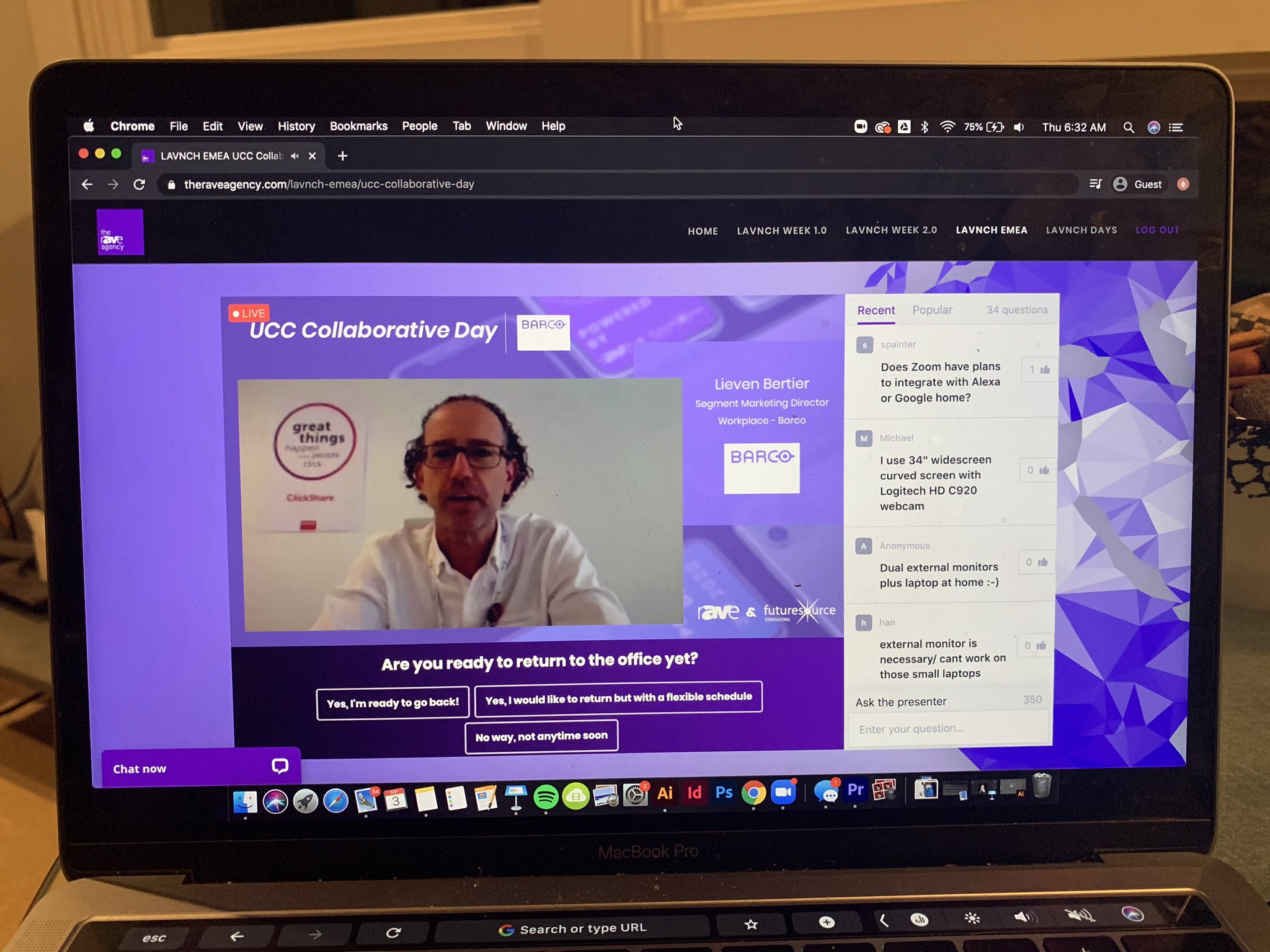
Looking at the hybrid workplace, Bertier argued that we must:
- Reinvent the role of the meeting. Understand that technology at work and in meeting rooms is likely always going to be more sophisticated than technology at home.
- Understand the vital role of the laptop. The laptop is the most critical piece of technology used by employees to get work done.
- Aim for the agile workplace. Barco’s BYOM (bring your own meeting) theory recognizes the importance of flexibility for employees. Barco ClickShare Conference offers employees the freedom and flexibility they expect — deciding when, where and how they want to meet, connecting to meetings instantly.
It’s important to integrate IT solutions and make investments that empower people to work better together. What’s all this for? Better engagement and collaboration.
The Old Future Wasn’t Sustainable — Let’s Build a Better One
Next up, we heard from Simon Dudley of Logitech, who’s been in the AV space for a cool 28 years now.
The internet hasn’t changed the world as far as productivity, Dudley started. Look at Solow’s Paradox. People have been using old ways of working to do more of the same — more hotels, more trade shows, etc. — rather than reinvent the way they do business. Dudley continued that consumers are finally “crossing the chasm” in our technology-adoption lifestyle. And we’ve done it over just the last nine months (which he predicted was supposed to take another five years).
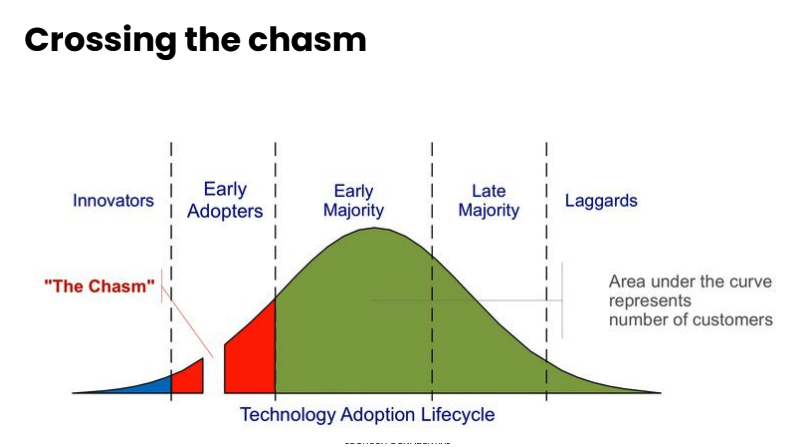
Image: Logitech
For videoconferencing, “The reality is people actually just want it to work,” Dudley said.
To be successful, it needs to be centrally managed, Dudley explained. It needs to be easy to buy and install and maintain. If it isn’t, users won’t use it. It needs to be globally available — both hardware and software. (There also needs to be trust from a security standpoint.) All of this is part of the “consumerization” of video technology that’s been happening over the last 40 years or so, he added. Important too will be balancing end user preferences and IT requirements. End users want: Simple to use; works every time; beautifully designed; and “make me look and sound good.” IT teams need: Simple to set up; performs reliably. Scalable solutions; and easy to support and manage.
“Consumers ultimately are the kings here, and they are driving that market,” Dudley said.
So what actually is the physical office for? Shooting ideas off each other in person, having a social experience for improved mental health outcomes (for many), having an actual meeting space (but hopefully with more flexible start and end times aside from 9 a.m. and 5 p.m.), or just simply feeling like you’re part of the organization. All this fundamentally changes what the physical office should and will look like.
Regarding the home office: Sitting at your laptop with a little webcam on it, as we’re currently doing, won’t cut it, Dudley argued. Look at broadcast setups — unboxing livestreams, for instance. Dudley thinks many home users will realize they need something a little more sophisticated technology-wise. He thinks there will be an arms race when people realize the home office will need some upfront financial investments to create what’s essentially mini home studios.
Planning for the future includes scale — think 10x, not 10%. It includes practical solutions that solve business problems. And it considers IT making sure the “ownership experience” is valued — does it look good in different environments? Quoting the common expression, “Simplicity is the ultimate sophistication,” Dudley concluded.
This has been an incredibly powerful story as we talk about what this “new” hybrid world looks like — a blurred line between home and office; flexible working; and more.
Each session in this UCC Collaborative Day event brought something to the table. What were your biggest takeaways?
If you missed UCC Collaborative Day and want to rewatch all the sessions, you can still register. AVIXA CTS RUs are not available in the archives, but you’ll still want to catch what you missed. Register for LAVNCH EMEA here before reading the next story:


